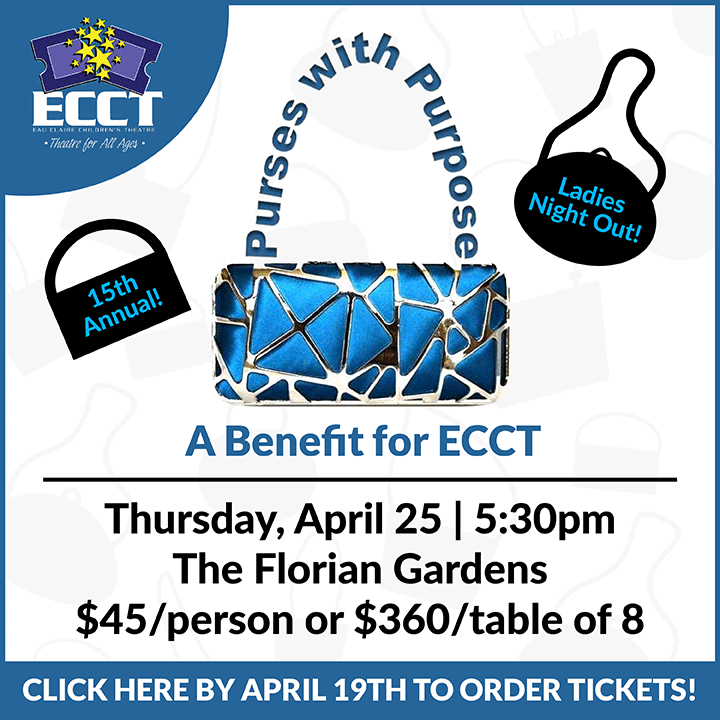In Land We Trust
what the Western Wis Land Trust can do for you

 Camping, hiking, tubing, and biking are among my favorite weekend activities, and thanks to the Chippewa Valley’s well-maintained parks and other woodlands, the locations for these activities are endless. One place I’m excited to explore is Devil’s Punch Bowl County Park in Menomonie, known for its scenic gulley and small waterfall. Local attractions like this are enjoyed by many, but some may be surprised to learn that they wouldn’t be available for enjoyment if it weren’t for organizations like the non-profit Western Wisconsin Land Trust (WWLT), which owns and maintains the Devil’s Punchbowl and preserves other places like it to ensure their existence for future generations. Among other methods, the WWLT enacts conservation easements – legal agreements that restrict future activities on the land– to protect land from future development and ensure that water quality is maintained, wild animals can still thrive, farmland is kept in tact, and future generations can enjoy their legacy.
Camping, hiking, tubing, and biking are among my favorite weekend activities, and thanks to the Chippewa Valley’s well-maintained parks and other woodlands, the locations for these activities are endless. One place I’m excited to explore is Devil’s Punch Bowl County Park in Menomonie, known for its scenic gulley and small waterfall. Local attractions like this are enjoyed by many, but some may be surprised to learn that they wouldn’t be available for enjoyment if it weren’t for organizations like the non-profit Western Wisconsin Land Trust (WWLT), which owns and maintains the Devil’s Punchbowl and preserves other places like it to ensure their existence for future generations. Among other methods, the WWLT enacts conservation easements – legal agreements that restrict future activities on the land– to protect land from future development and ensure that water quality is maintained, wild animals can still thrive, farmland is kept in tact, and future generations can enjoy their legacy.
“Our mission is to preserve the natural character of Western Wisconsin,” stated Executive Director Richard Gauger. “We would like to see as much of Western and Northwestern Wisconsin stay like it was when we first came here: small farms, wooded hillsides, open lakes. That’s why we live here and love it, after all.”
Since its establishment, the WWLT, one of 50 such organizations in Wisconsin, has saved 26,000 acres. Unlike government organizations, the WWLT works with private individuals interested in protecting family-owned land.
“Typically, they want their land to stay the way that it is,” explained Gauger. “They want the trees to be managed well; they want to allow the wildlife as much access to the property as they can; they don’t want to disturb things.”
As Gauger explains, landowners have many rights – the right to build a house on the land, the right to hunt the land, the right to farm the land, and, of course, the right to pass down that land to family members or sell it – and the WWLT helps them understand and determine which rights they’d like upheld. For instance, a local farmer who wants his grandchildren to inherit the same quiet, subdivision-free forest he currently hunts in may “give” his right to develop land to the WWLT, who, through the conservation agreement, would make sure no residences but the current one are ever built on the land.
 “Every single family is different, so every single one of our protection agreements is different,” Gauger said of the legal documents, which can include details like ATV use and cross-country skiing. “They basically say, ‘this is what you can do and this is what you can’t do on the property.’ ”
“Every single family is different, so every single one of our protection agreements is different,” Gauger said of the legal documents, which can include details like ATV use and cross-country skiing. “They basically say, ‘this is what you can do and this is what you can’t do on the property.’ ”
Conservation easements are only one preservation method performed by the WWLT. Like they did with the Devil’s Punch Bowl, the trust practices public conservation by turning donated land into nature preserves the public can enjoy. For instance, the 80-acre Mary E. Fitz Memorial Park, located south of Eau Claire, will be open to the public for walking, hiking, bird-watching, and cross-country skiing by the end of summer.
Conservation decisions are typically made by landowners later in life. However, the WWLT hopes younger generations will realize the importance of land conservation, too – and act now as well as later.
“We know development has to occur,” stated Gauger. “The question is … can we make decisions to preserve the land so that we maintain the beauty that we so much appreciate, but still have development along an area where we made proactive decisions to do that? Conservation is the first step.”
More information about the WWLT can be found at www.WWLT.org.




















